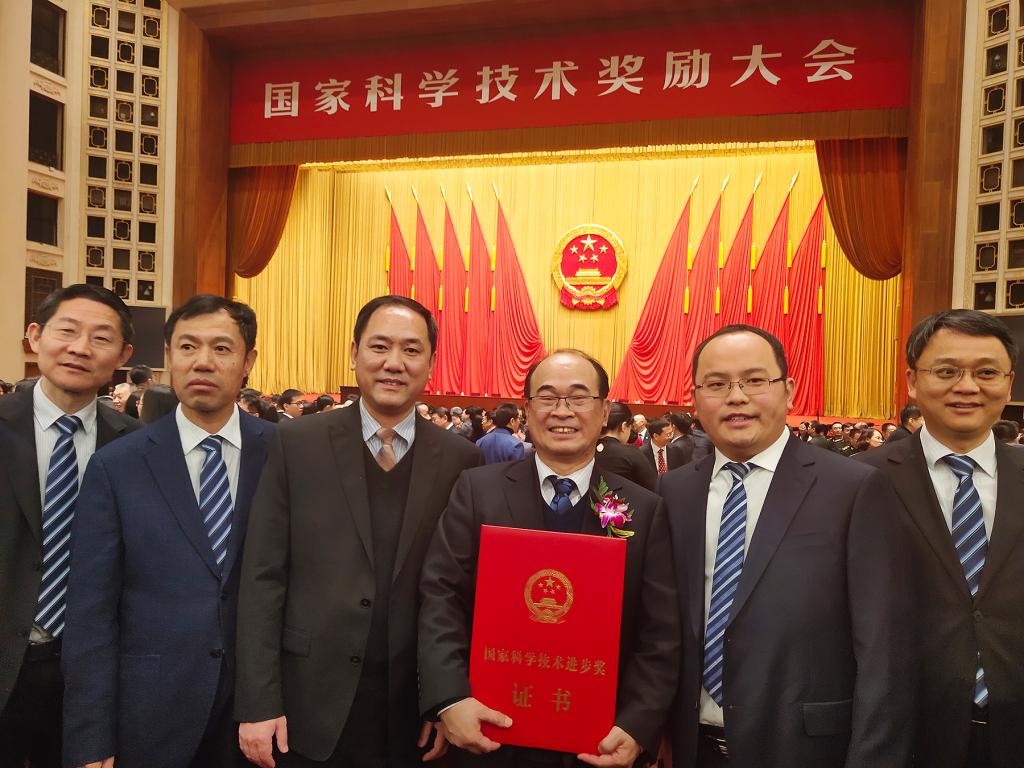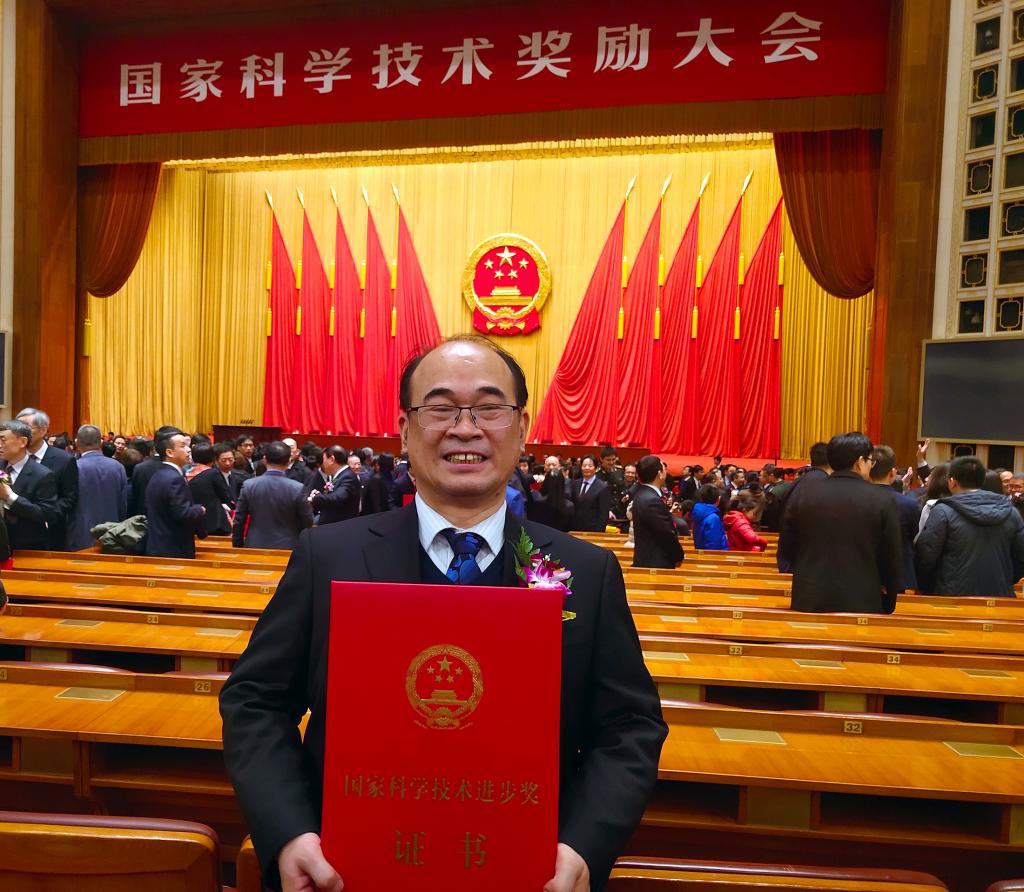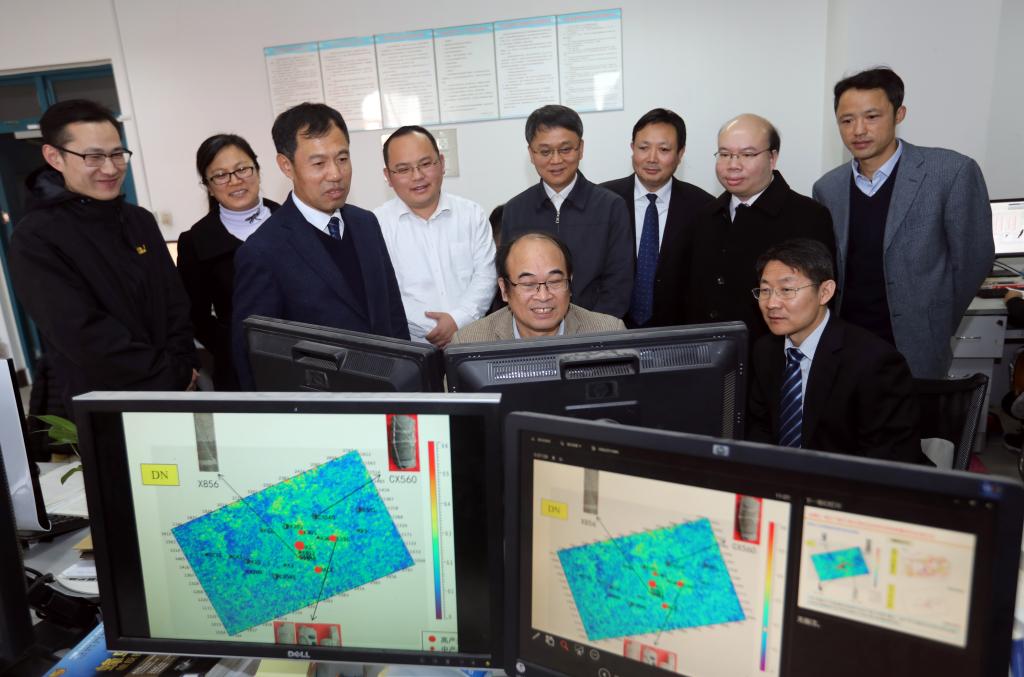

On June. 10th, 2020, 2019 National Science and Technology Awards Conference was held in Great Hall of the People. The project of technology of Pre-stack direct seismic inversion and industrialization of basic software for multi-type complex reservoirs from China University of Petroleum won the second price of National Science and Technology Progress Award. Prof. Yin Xingyao, the director of the program, received the award on behalf of the group.
If we regard geophysical exploration as an ultrasonic scanning of the earth, the pre-stack seismic inversion that describes underground reservoir is equivalent to a B-ultrasound examination of the reservoir. Now an integrated technology has overcome the technical bottleneck that limited pre-stack seismic description and oil-gas identification for multi-type complex oil-gas reservoirs. And it has also made significant breakthrough in the aspects of rock physical mechanism, inversion accuracy, reliability of oil-gas discrimination, and so on. This is -“pre-stack direct seismic inversion and industrialization of basic software for multi-type complex oil-gas reservoirs”, which makes a more detailed “color ultrasonic examination” for the complex reservoir.
In recent years, seismic exploration and development in China has advanced to new areas such as the deep-buried, deep-water and unconventional reservoirs. However, the more diversified and complex types of reservoirs are making the description and identification of multi-type complex oil-gas reservoirs a new research frontier and world-class problem. The existing pre-stack seismic inversion method and commercial software based on the theory of homogenous medium cannot meet the requirements of multi-type complex reservoir description and oil-gas identification, which is mainly reflected in the difficulties of clarifying the seismic characteristic with rock physics model, describing the heterogeneity characteristic in indirect calculation method of three parameters inversion, and identifying oil and gas in the mixed seismic response of rock skeleton, pore and oil-gas-water.

In order to solve this problem, continuous researches have been done by the project group led by Prof. YIN Xingyao since 2000. The researchers overcame the problems of unclear rock physics mechanism, insufficient inversion accuracy and low reliability of oil and gas identification in conventional pre-stack seismic inversion prediction method by relying on more than 100 projects such as national 973, 863, major projects and three major oil companies. Furthermore, they made original breakthrough in the three core technologies of multi-scale iterative rock physics modeling, pre-stack direct seismic inversion, and solid-liquid decoupling oil-gas identification of multi-type complex oil-gas reservoir. Moreover, the technical bottleneck restricting the pre-stack seismic description and oil-gas identification of multi-type complex oil-gas reservoir has been overcome, and the corresponding special basic software has been developed, which has made outstanding contributions to the development of "China core" in oil-gas exploration software domain.
In the past 20 years, the project team led by Prof. Yin Xingyao put forward three major scientific and technological theories through numerous tests. Their theories revealed the physical mechanism of micro structure and macro seismic response of complex oil-gas reservoir and established the multi-scale iterative rock physical modeling technology of core, logging and seismic prospecting. The test area of this project cover many basins and regions of Bohai Bay, Ordos, Sichuan, Songliao, Tarim, Junggar, Qaidam, the South China Sea, the East China Sea, Africa, South America, Oceania and so on. The quantitative analysis technology of micro main factors for multi-type complex reservoirs is established and 16 rock physical models for tight sandstone, carbonate rock, and other main types of complex reservoir are created. Those theories and technologies lay a foundation of reservoir description.

The project team established 18 new seismic reflection equations that represent the reservoir properties directly, and created a pre-stack direct inversion technology for multi-type complex reservoirs. Focused on the key problems, the researchers innovated the heterogeneous forward and inverse theory based on the new equations, created the pre-stack direct inversion technology of multi-level disturbance and developed the specific industrial software. They also opened up a new way to directly describe the space-variant features of the physical properties, fluid and brittleness of multi-type complex reservoirs, and the inversion accuracy increased by 12% on average compared with the international advanced technology. The corresponding theme paper was selected as one of the top ten "hot papers" in 2017 "China Science · Earth science", and it is the only one in the field of oil and gas exploration. The seismic reflection equation which is directly represented by young's modulus and Poisson's ratio is called YPD equation in the industry, and it is widely used in the direct evaluation of the fracturing ability of unconventional reservoirs.
On the basis of extensive researches and tests, the project team put forward the seismic oil-gas identification theory of decoupling of rock skeleton, pore and multiphase modulus of oil, gas and water, which clarifies the seismic response modes of different phases and realizes the leap from multiphase mixing to solid-liquid decoupling of oil-gas identification. The practice indicates that the accuracy of oil and gas identification for multi-types reservoirs such as tight sandstone and complex carbonate rock in the middle and deep layers is greatly improved. The software based on those core technologies has realized industrial application and achieved remarkable economic benefits.
The project received more than 100 foundations for scientific research. Since 2003, the integrated technology has been successfully applied to 69 areas and regions, such as Bohai Bay, Erdos, Sichuan, the South China Sea, Africa, South America and Oceania, and effectively guided the recognition of multi-type complex oil-gas reservoirs. The project has won one national award and 8 provincial-level awards, 43 national invention patents, 15 software regisration copyrights with 515 papers and 6 monographs published. The group, internationally renowned, has published 161 papers on SEG and EAGE
Author: XI Yijun, JIANG Man
Updated: 2020-03-26